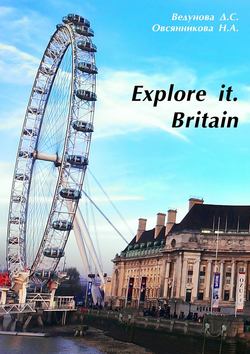Читать книгу Explore it. Britain - Д. С. Ведунова - Страница 5
Wales
ОглавлениеWales is located in the west of the island of Great Britain. In the west and north it is bordered by the Irish Sea (Irish Sea – Môr Iwerddon, St. George’s Channel), in the south it is bordered by the mouth of the River Severn (Bristol Channel). To the east its boundary is defined by the administrative division of the United Kingdom. Most of the territory is occupied by the various Welsh mountains. The main are the mountains of Wales (Cambrian Mountains) with the highest points of Snowdon (Snowdon – Yr Wyddfa). This mountain is 1085 m above sea level, Cader Idris (Cadair Idris) is 892 m and Plinlimon (Plynlimon) is 752 m. South West Wales is comparatively low, hilly region, and to the south there are the mountains of the Brecon Beacons (Brecon Beacons – Bannau Brycheiniog). This area is relatively young compared to Cambrian Mountains and contain significant reserves of coal. Brecon Beacons reach a height of 886 m above sea level. Along the border with England there is a number of minor elevations: Berwin Mountains, Beacon Hill, Radnor Forest. Other plains are located on the island of Anglesey (Ynys Môn), in the valley of Glamorgan and Gower peninsula (Gower – Gŵyr) in the south and in the extreme south-west, Pembrokeshire (Pemrokeshire – Sir Benfro).
Wales is open to winds from the Atlantic Ocean, so the climate there has some features of the sea. The coastline is an almost perfect half circle, bounded in the north by the peninsula of Llyn (Lleyn – Llŷn), and in the south there is a large peninsula that ends in the southwest of St. David’s Head (Penmaen Dewi). There are up to 1,270 mm of precipitation in the west coast, while to the east of the mountains these figures are somewhat lower (up to 723 mm / year), and in the mountains themselves this numbers are higher (up to 2540 mm / year). The average July temperature is 15.6°C, in January it’s 5.6°C.
Most of the territory used to be covered with forests of Wales, but now much of it is reduced. Nevertheless Wales is one of the most beautiful regions of the UK. Nearly a quarter of its territory is declared either the National Park (Snowdonia (Eryri), Brecon Beacons), or an area of the outstanding natural beauty.
Basic information
Area: 20 764 km2. Wales stretches from north to south for 240 km and from west to east for 185 km.
Population: 2,903,085 people.
Official name: Principality of Wales – Tywysogaeth Cymru
The unofficial name: Wales – Cymru
The Flag has no special name. The heraldic description: Passau red dragon on white and green box (with minor variations).it was officially approved in 1959.
Coat: There’s no official coat of arms in Wales, but there’s a royal badge (Bathodyn Brenhinol Cymru).
Officially, the head of the Principality of Wales is the Prince of Wales. In the center of the shield of his coat of arms there is the coat of arms of the Principality of Wales.
Motto: Y Ddraig Goch Ddyry Cychwyn “Red Dragon leads forward.” An informal motto also distributed Cymru am byth – “Wales forever.” The motto of the Prince of Wales – Ich Dien “I serve”
Plant: leeks.
Anthem: Hen Wlad Fy Nhadau – Land of My Fathers
Patron saints: Dewi Sant – St. David (holiday – March 1)
National holiday: 1 of March Dydd Gŵyl Dewi – St. David’s Day
Capital: Cardiff – Caerdydd (1955)
Official language: English. According to the Act on Welsh. The Welsh language is equalized by the law in all areas of public life in Wales.
Government: National Assembly for Wales – 9Cynulliad Genedlaethol Cymru). The Wales Office (Swyddfa Cymru), headed by the State Secretary for Wales is in London.
Symbols
The Flag of Wales. The dragon was used in Britain since Roman times. Initially, it was depicted on the banners of the Romans. After that it was used not only by the Britons but also by the Saxons and the Scots. Britons had a red dragon, but in the Middle Ages, one could meet it in a variety of variations on the theme of fire (red, fire, gold). White and green are the colors of the Tudors. However, these colors were associated with Wales in the past. In 1807 the Royal Badge of Wales was declared a red dragon on a green hill on a white field. In 1953 the sign was changed to a red dragon in a white and green field shield was girded with a ribbon with the motto of Y Ddraig Goch Ddyry Cychwyn and crowned. Flag of Wales was declared a royal sign on a white field. In 1959, the Wales flag adopted its present appearance.
Questions on the basis of the material studied:
1. When was the Welsh Flag officially approved?
2. Is there the Welsh language?
